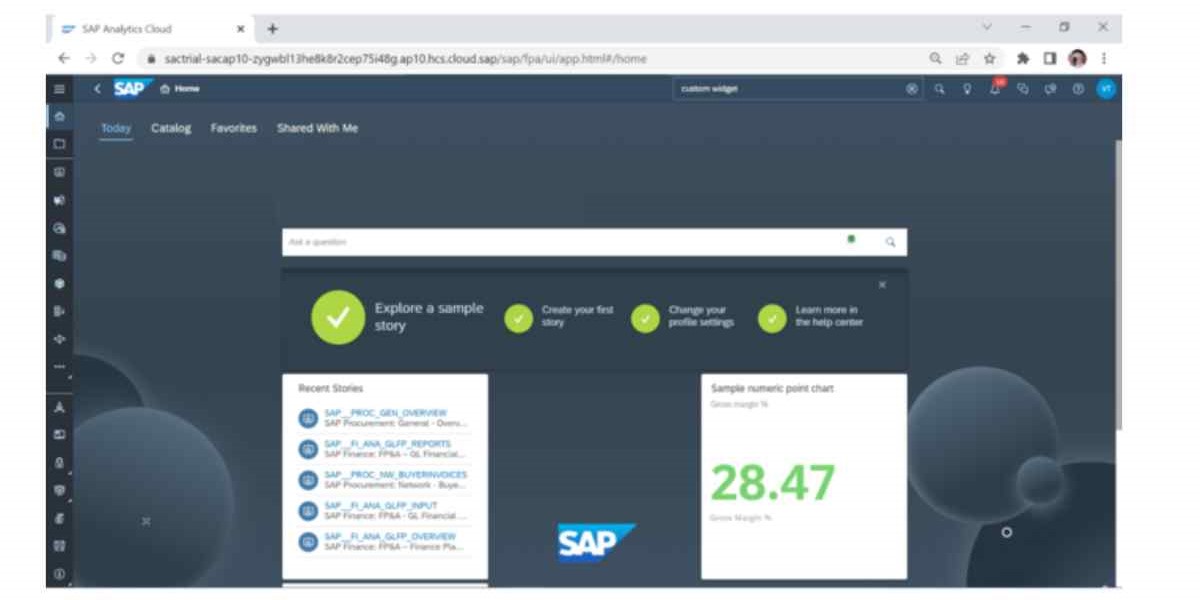In today’s fast-paced digital world, businesses need real-time data and insights to make informed decisions. Analytical applications are essential for this, but their effectiveness hinges on being user-friendly and able to present information clearly. SAP Analytics Cloud (SAC) enhances these capabilities with its Custom Widget feature, allowing users to add unique widgets to their analytics applications to meet specific needs that standard widgets might not cover.
The Custom Widget feature in SAC offers a flexible way to extend the platform’s capabilities beyond the pre-configured widgets. It allows users to create custom user interface elements, data visualizations, and specific functionalities tailored to their needs. This is especially useful for specialized data visualization tasks where standard widgets fall short.
SAP Analytics Cloud itself is a comprehensive cloud-based solution that combines enterprise planning, advanced analytics, predictive capabilities, and business intelligence into one platform. It provides robust data connections, a variety of visualization tools, and powerful analytical features, all essential for businesses competing in today’s market. SAC allows users to analyze, plan, predict, and report from a single system, significantly improving their ability to make timely, data-driven decisions.
Custom Widgets in SAC integrate smoothly with the existing framework, working alongside standard widgets to offer additional functionality designed by third-party vendors or users themselves. This integration enhances the overall versatility and capability of the analytics applications.
One of the major benefits of SAC’s Custom Widget feature is its user-friendly drag-and-drop interface. This makes designing and personalizing widgets simple. Users can create charts, tables, and other visualizations while incorporating data from various sources, including both SAP and non-SAP systems. This ease of use improves the user experience and ensures that the analytics are both accurate and relevant.
Custom widgets allow users to build interactive and dynamic dashboards that provide deeper data exploration and clearer communication. These widgets can include interactive elements like charts that let users filter data, drill down into details, and explore information from different perspectives. This functionality helps in spotting trends, patterns, and anomalies, leading to better decision-making in today’s rapid business environment.
Creating custom widgets in SAC is straightforward. Users can use the platform’s drag-and-drop features to develop visualizations tailored to their needs. SAC offers a range of built-in data visualization options, such as bar charts, line charts, scatter plots, and heat maps, which can be further customized with custom widgets.
SAC also supports collaboration by allowing users to share and reuse custom widgets across different teams and projects. This streamlines the creation and maintenance of analytics applications, ensuring consistency and high quality.
Being a cloud-based platform, SAP Analytics Cloud provides flexibility to access analytics applications and data from anywhere at any time. This scalability simplifies the management and maintenance of analytics infrastructure and enhances the accessibility of analytical tools.
To create and upload custom widgets in SAC, users need the appropriate permissions. The process involves going to the “Custom Widgets” tab, choosing to create a new widget, and uploading the widget file, such as “box.json.” Once uploaded, these custom widgets are available for integration into analytic applications, allowing users to enhance their dashboards with specialized functionalities.
In summary, SAP Analytics Cloud’s Custom Widget feature greatly enhances the platform’s ability to deliver powerful and user-friendly analytics applications. By enabling the creation of interactive dashboards, integrating multiple data sources, and providing real-time insights, custom widgets improve data understanding, communication, and decision-making. This functionality enriches the user experience and helps modern businesses stay competitive in a data-driven world.






Comments